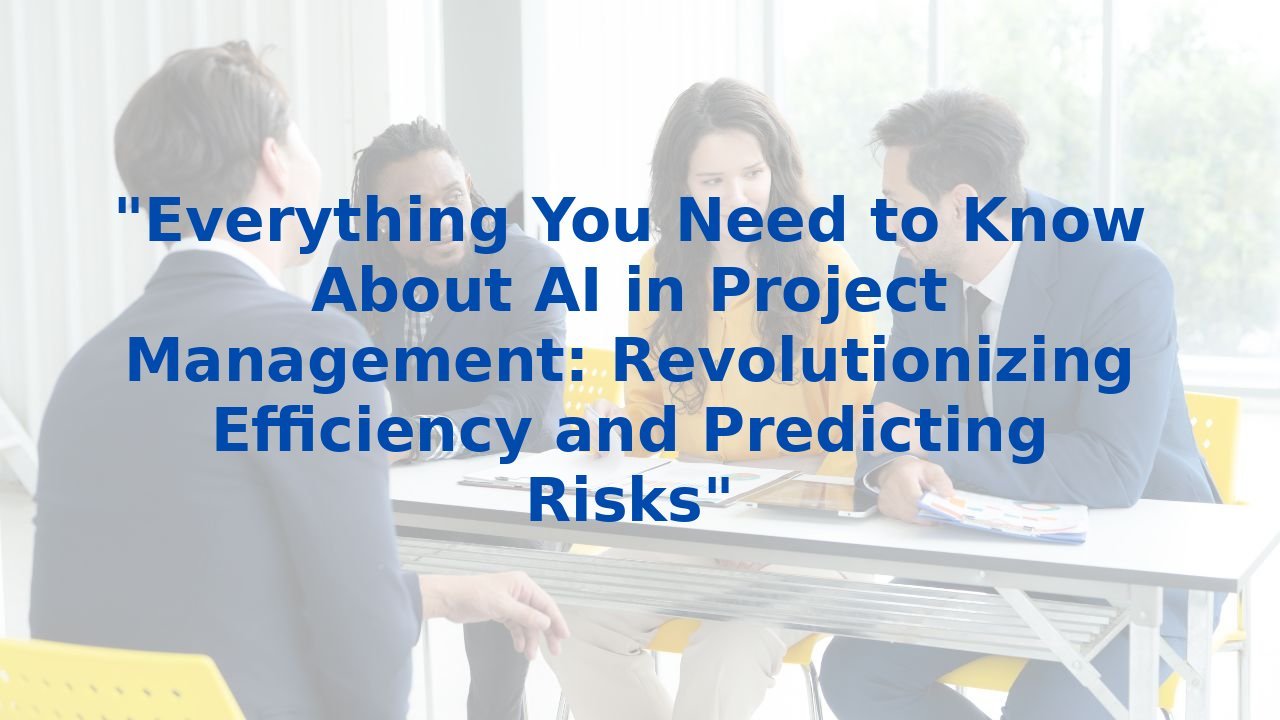Mastering the Balance: A Guide to Effective Management and Leadership in Today's Business Landscape
Mastering the Balance: A Guide to Effective Management and Leadership in Today's Business Landscape
In the ever-evolving world of business, mastering the delicate balance between management and leadership has become more crucial than ever. As organizations strive for efficiency and effectiveness, the integration of Artificial Intelligence (AI) into business processes is no longer just a trendy advancement—it's a strategic necessity. This guide aims to illuminate how AI can enhance general business processes and the profound benefits of adopting an AI-driven approach.
Understanding Business Process Management (BPM)
Business Process Management (BPM) is the systematic approach to making an organization’s workflows more effective, efficient, and adaptable to changing environments. The traditional methods often rely on manual processes and human oversight, which can be riddled with inefficiencies and errors. Enter AI—a potent tool transforming how BPM operates by infusing intelligence into the very core of business processes.
1. Process Discovery and Mapping
One of the first steps in effective BPM is gaining a clear understanding of the current processes. AI excels in process discovery by analyzing vast amounts of operational data to unveil hidden inefficiencies. Techniques like process mining and natural language processing are employed to visualize workflows and highlight areas ripe for improvement. With this knowledge, organizations can determine where to focus their efforts to enhance productivity.
2. Process Automation
An undeniable strength of AI lies in process automation. Menial tasks that once consumed hours can now be handled by AI bots, which minimizes human intervention and drastically reduces errors. Tasks like document processing and data entry are automated, allowing employees more bandwidth to engage in strategic work. This shift not only streamlines workflows but also cultivates a more innovative workplace culture.
3. Process Management and Improvement
AI introduces a proactive approach to process management. It continuously monitors operations and leverages historical data to forecast potential issues. This capability ensures that problems are flagged in real time, allowing for swift intervention. By utilizing data-driven insights and root cause analysis, organizations can drive sustainable improvements—turning reactive measures into proactive enhancements.
4. Enhanced Decision-Making
The power of AI extends significantly into the realm of decision-making. With its capability to analyze both structured and unstructured data across diverse sources, AI elucidates trends, predicts outcomes, and reveals underlying causes. This insight is invaluable when navigating complex decisions involving multiple stakeholders. The result? Informed decision-making that aligns closely with organizational goals.
5. Real-Time Monitoring and Optimization
Real-time process monitoring powered by AI allows unceasing vigilance of business operations. Organizations can detect deviations from established processes and unusual activities instantly. By catching anomalies early, teams can optimize workflows, continuously refining business processes for peak efficiency.
The Multifaceted Benefits of AI in BPM
The integration of AI into BPM unleashes a variety of benefits:
- Improved Efficiency: By automating routine tasks, AI drastically minimizes the time and effort expended on manual processes.
- Enhanced Productivity: With distractions from mundane tasks removed, employees can channel their energy toward strategic initiatives.
- Better Decision-Making: AI's insightful analyses foster informed decision-making at every level of the organization.
- Reduced Costs: Minimizing human error leads to cost savings through decreased rates of rework and error rectification.
- Increased Agility: Organizations equipped with AI can pivot effortlessly in response to market trends and customer demands.
Investing in Employee Training for AI Integration
As powerful as AI may be, its effectiveness is inherently tied to the capabilities of the workforce it supports. Investing in comprehensive training programs for employees to effectively utilize AI systems catalyzes success. Trained teams can:
- Improve Collaboration: Adept employees understand the synergy between human intelligence and AI, fostering a collaborative environment.
- Enhance Problem-Solving Skills: By leveraging AI insights, employees are empowered to tackle challenges with greater confidence.
- Adapt Quickly: Well-trained personnel can embrace new processes and tools, ensuring a smooth transition during any technological upgrades.
Conclusion: Paving the Path Forward
The integration of AI into Business Process Management is not just a technological upgrade; it's a fresh lens through which organizations can view their operational landscape. By enhancing processes with AI-driven insights and automation, businesses can bolster efficiency, productivity, and informed decision-making. Coupled with a commitment to employee training, organizations can truly master the balance of management and leadership in this rapidly changing landscape. Embracing AI is not merely a business decision—it's a declaration of intent to lead in innovation and growth.



